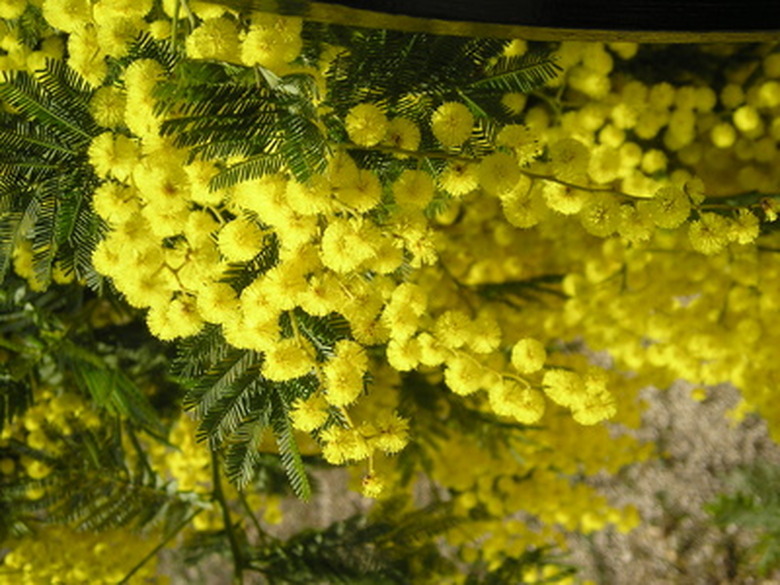Toxicity Of Mimosa Tree
Mimosa trees were introduced to the U.S. in 1745 and have been used ever since as ornamental details in the landscape. Originally from China, mimosas are also called silk trees. They are on numerous invasive plant lists because of their rapid growth and ability to spread through seed or vegetatively. The seeds have the ability to remain dormant for up to 50 years due to a thick, impenetrable seed coat. This attractive tree is on the toxicity list of the USDA.
Description
Mimosas can grow 20 to 40 feet tall and have graceful fern-like leaves that alternate on the stem and can be 30 inches long. The tree gets brightly colored pink pompons that are its flowers and carry their scent along the breeze. Mimosas are vigorous growers and have the ability to re-sprout when severely damaged, but their wood is weak so they need to be staked when overgrown. Mimosa is a member of the legume family and can fix oxygen just like peas and beans. The tree is deciduous and is used ornamentally as a border tree or bush.
- Mimosa trees were introduced to the U.S. in 1745 and have been used ever since as ornamental details in the landscape.
- Mimosas are vigorous growers and have the ability to re-sprout when severely damaged, but their wood is weak so they need to be staked when overgrown.
The Seedpods
The fruit of the mimosa is the seedpod. Mimosas are leguminous and the fruits resemble a pea pod. The exterior is slightly leathery and dries to a crisp shell. The seeds disperse after winter and require some rough treatment to pierce the thick outer coating. After flowering, small, flat 6-inch-long pods emerge from the flowers and ripen in August and September. A series of five to 10 brown oval seeds are contained in the pods and can remain viable until the correct conditions are met. The seed have been shown to be toxic to animals.
- The fruit of the mimosa is the seedpod.
- A series of five to 10 brown oval seeds are contained in the pods and can remain viable until the correct conditions are met.
Toxin
The mimosa pod carries the poison. The pod contains neurotoxic alkaloids which are also known as the paralytic shellfish toxins. The entire pod is considered poisonous but the bark and wood have not been shown to carry the toxin. Affected animals are grazers like sheep and goats. There is no information regarding human toxicity or domestic animals.
Symptoms
The neurotoxin causes seizures, tremors, staggering, convulsions and labored breathing within a couple of hours of ingestion. The University of Arkansas lists mimosa at a toxicity of 4 and considers it not dangerous to humans. The city of Austin, Texas, has released its opinion that the tree is toxic to pets and will cause death. The best thing to do when confronted with conflicting reports is to err on the side of caution and keep pets and children away from the silk tree.
- The mimosa pod carries the poison.
- The University of Arkansas lists mimosa at a toxicity of 4 and considers it not dangerous to humans.
Warning
In addition to the potential toxicity, the mimosa has become a competitor for natural species in Florida, Texas and other warm-weather states. In these states, do not plant the tree and choose a less-invasive ornamental. Disposal of the tree is mechanical removal and monitoring stumps to remove sprouts as they appear.
